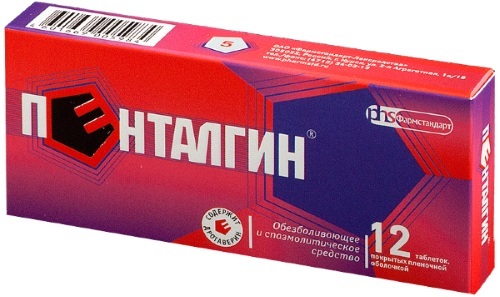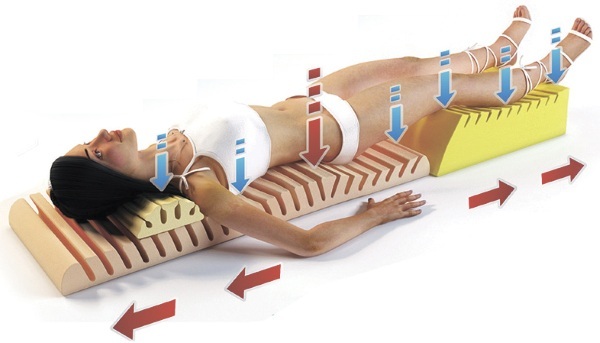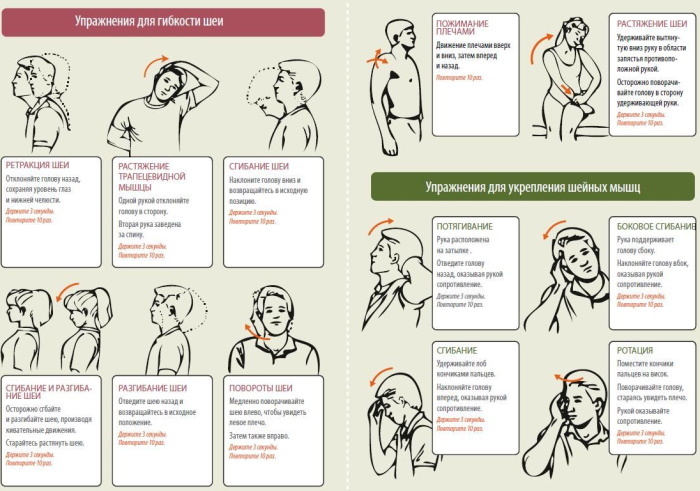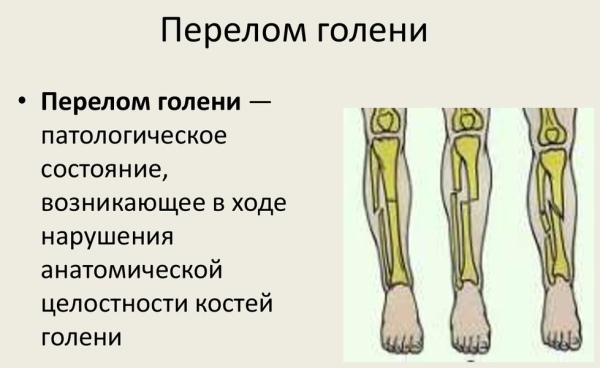Spondylosis is a serious illness, which is characterized by the formation of growths from bone tissue. In most cases, pathological processes affect the lumbosacral spine. The disease is accompanied by characteristic clinical symptoms, with which it is important to go to the hospital in a timely manner and undergo a comprehensive examination.
Record content:
- 1 Views
- 2 Stages and degrees
- 3 Symptoms
- 4 Reasons for the appearance
- 5 Diagnostics
- 6 When to see a doctor
- 7 Prevention
-
8 Treatment methods
- 8.1 Medications
- 8.2 Traditional methods
- 8.3 Other methods
- 9 Possible complications
- 10 Video about spondylosis
Views
In medicine, the following types of spondylosis of the lumbosacral spine are distinguished:
| Name | Description |
| Statistical | The main cause of the pathological condition is the premature wear of the discs due to the axial load. Inflammatory and degenerative processes affect the anterior, lateral and posterior parts of the vertebra. |
| Reactive | The inflammatory process spreads to the structures of the spine. |
| Spontaneous | The pathological condition provokes age-related biochemical changes in the structures of the intervertebral discs. |

A vertebrologist, traumatologist or orthopedist will help to establish an accurate diagnosis. It is important to go to the hospital in a timely manner, undergo an examination and start treatment. Otherwise, the person will face serious complications.
Stages and degrees
According to the degree of development of the degenerative-inflammatory process, the following stages of the disease are distinguished:
| Name | Description |
| Stage I | The disease proceeds without pronounced clinical signs. A person is disturbed by periodic painful sensations. The growths form on the vertebrae. |
| Stage II | The patient's quality of life deteriorates, especially after physical exertion of varying intensity. The likelihood of disability is high. The size of osteophytes increases. They can merge with each other. Bone tissue grows beyond the intervertebral disc. |
| Stage III | Motor functions are limited. Osteophytes form one large growth. The pathological condition is accompanied by strong muscle tension and partial immobility of some parts of the spine. In serious situations, mobility is completely absent. |
Spondylosis of the lumbosacral spine is also distinguished by the course:
| Name | Description |
| Slow | Pathological processes develop gradually. |
| Moderate | Progressive degenerative-inflammatory changes occur with periodic exacerbations. |
| Quick | In a short period of time, ankylosis appears, which affects several segments of the spine at once. |
| Fulminant | The disease appears abruptly and acutely, unfavorably. |

At each stage, characteristic clinical signs appear, with which it is important to be examined in a timely manner and begin treatment. Diagnostics and therapy is carried out under the supervision of a vertebrologist, traumatologist or orthopedist.
Symptoms
Spondylosis of the lumbosacral spine occurs more often in people over the age of 50 (30%).
Degenerative-dystrophic processes are accompanied by characteristic clinical symptoms:
- pain syndrome appears in the lower extremities and buttocks;
- false lameness occurs;
- weakness in the legs after a short walk or standing upright;
- painful sensations decrease when bending forward or lifting up;
- motor functions are gradually limited.
Prolonged lack of physical activity leads to the appearance of pain syndrome. The muscles in the affected area become tense and painful.
Reasons for the appearance
Spondylosis of the lumbosacral spine proceeds slowly, develops gradually, accompanied by excruciating pain syndrome. Treatment in the later stages is difficult and lengthy.
There are numerous provoking factors:
- disturbed material metabolic processes;
- large and uneven load on the spine (prolonged walking, staying in an uncomfortable position);
- suffered injuries;
- endocrine system damage;
- lifting large loads;

Movers are most susceptible to spondylosis of the lumbosacral spine - hereditary predisposition;
- deformation of bone tissue against the background of age-related changes;
- atrophy of muscle fibers as a result of physical inactivity;
- sedentary, sedentary lifestyle;
- complications of an infectious lesion of the body;
- the formation of tumors;
- extra pounds, obesity.
Chronic kidney and liver diseases and diabetes mellitus also contribute to the development of inflammation and bone growth. In the risk category are elderly people over 50 years old, in whose body metabolic processes slow down. Trophism is disturbed, dystrophic processes develop in the tissues of the spinal column.
Diagnostics
A comprehensive examination will help a traumatologist or vertebrologist make an accurate diagnosis, choose a treatment, taking into account the test results.
To diagnose spondylosis of the lumbosacral spine, the specialist prescribes the following methods:
| Name | Description |
| X-ray | The survey is carried out in three projections. A specialist can determine the stage and degree of development of pathological processes. |
| Computed tomography (CT) | The most informative diagnostic methods that allow you to assess the condition of the vertebrae, ligaments, muscles, intervertebral discs.
|
| Magnetic resonance imaging (MRI) | |
| Ultrasound examination (ultrasound) | The examination will allow to determine the focus of the inflammatory process, to establish its degree of development. |
| Electromyography | A diagnostic method that helps assess the electrical activity in muscle fibers. |
It is important to differentiate the disease, since many of the emerging signs accompany other pathologies (stomach ulcer, cardiac disorders). Given the cause of spondylosis of the lumbosacral spine, additional consultation with other specialized doctors (neurologist, osteopath, physiotherapist) may be required.
When to see a doctor
It is recommended to visit a vertebrologist, traumatologist or orthopedist as soon as the first symptoms of the disease appear. It is important not to postpone the visit to a specialist, since the pathological processes will progress, the symptoms will intensify, the person's condition will worsen.
In difficult situations, surgical intervention is required, after which a person will have a long rehabilitation period. Without proper and timely therapy, serious complications appear, which are more difficult to cope with.
Prevention
It is possible to prevent the development of spondylosis of the lumbosacral spine if the cause of the development of pathological processes is not old age or a hereditary factor.
It is enough for a person to remember the simple recommendations of a doctor:
- Correctly and rationally compose the menu. Without fail, the diet must include gelatin.
- Eat moderate physical activity to help strengthen your back muscles and ligaments.
- Control body weight, avoid extra pounds.
- At high risk of developing the disease, wear a special corset that will support the spinal column.
- It is important to avoid situations in which the spine could be injured.
If the work involves prolonged sitting, it is recommended to change positions more often. A special support corset will help to slow down the already existing degenerative-inflammatory processes and prevent recurrence of pathology. The product should be selected with a doctor, taking into account the stage and degree of development of the disease, as well as the human condition.
Treatment methods
Therapy for spondylosis of the lumbosacral spine is carried out using complex methods. The main goal of treatment is to stop degenerative-dystrophic processes, prevent the destruction of cartilage tissue and the occurrence of serious complications.
The doctor prescribes special drugs, taking into account the results of a comprehensive examination. If there are no contraindications, you can use folk remedies.
Medications
It is impossible to completely get rid of spondylosis of the lumbosacral spine. Medicines will help stop the development of pathological processes and prevent complications. Medicines are selected by the doctor, referring to the results of the examination. The specialist also takes into account the patient's condition, clinical signs of the disease.
| Drug group | Name | Application |
| Anti-inflammatory drugs | Indomethacin, Ketanov | Medicines reduce pain and inflammation. The tablets are taken orally after meals. The adult dosage is 25 mg 2-3 times a day. |
| Chondroprotectors | Sustamed, Chondroitin | The funds contribute to the restoration of the cartilaginous structure of the spine. The medicine is injected intramuscularly. The recommended dosage for adults is 1 ml every 14 days. |
| Angioprotectors | Pentoxifylline, Trental | The drugs improve microcirculation in the affected area of the spine. The medicine is administered intravenously in the morning and evening. One dropper contains 100 mg of active ingredient (ampoule - 5 ml). The medicine is diluted with sodium chloride or glucose before administration. |
| Immunomodulators | Immunal, Aflubin | The drug is taken orally with plenty of water. Adults are advised to take 1 tablet 3-4 times a day. The duration of therapy is 1-8 weeks. |
| Sedatives | Persen, Novopassit | Medicines calm the central nervous system, improve sleep, and reduce anxiety. The drug is prescribed for adults 2-3 tablets 2-3 times a day. The course of continuous treatment lasts 1.5-2 months. |
| Muscle relaxants | Baclofen, Sirdalud | The drugs relax the muscles, eliminate spasms. The medicine is taken orally with meals. Adults are prescribed 5-20 mg 3 times a day, taking into account the patient's condition. |
| Glucorticoids | Diprospan, Hydrocortisone | Medications reduce severe pain and other clinical signs of spondylosis. The drug is administered intramuscularly, intraarticularly or locally. The adult dosage is 1-2 ml every 1-4 weeks, depending on the condition of the person. |
| Analgesics | Pentalgin, Spazgan | The medicine is taken orally 1 tablet 1-3 times a day. The course of treatment lasts 3-5 days. |

It is important to strictly adhere to the compiled treatment regimen, many drugs provoke side effects. Additionally, patients are prescribed vitamin complexes (Milgamma, Neurobin), which contain trace elements necessary for the regeneration of damaged tissues.
Traditional methods
Spondylosis of the lumbosacral spine is treated with prescriptions of healers and healers in complex therapy, along with traditional drugs. It is necessary to discuss their use with the attending physician, since many of the components used can aggravate the health condition, provoking the appearance of an allergic reaction. We must not forget about individual sensitivity.
| Name | Recipe | Application |
| Lingonberry leaf decoction | Pour the crushed leaves of the plant (2 tablespoons) with hot water (1 liter). Insist 2 hours and strain. | The finished product is recommended to take 0.5 tbsp. 3 times a day. |
| Burdock root | Chop the burdock root and add 3 tsp. with boiling water (1 tbsp.). Soak for 30 minutes and drain. | The resulting broth should be consumed in 3 tablespoons. 3 times a day. |
| Herbal collection | Mix in equal proportions birch leaves, burdock, sweet clover, St. John's wort, grass of bird highlander, black elderberry, nettle, peppermint. Add juniper, parsley, dandelion root, sage, horsetail, fennel, violet, goldenrod. Mix all components well and pour in 1 tbsp. herbal collection with hot water (500 ml). Close the container and leave for 7-9 hours. Strain the resulting broth and use hot. | It is recommended to drink the finished product after meals after 2 hours for 0.5 tbsp. 4 times a day. The herbal collection has an anti-inflammatory effect, improves metabolic processes in the body. The course of treatment lasts 2 months, then it is recommended to take a break for 10 days and continue therapy. |

Horsetail juice contains a large number of beneficial elements that are necessary for joints. It is recommended to take it before meals for 20-25 minutes, 20-25 drops 3 times a day.
Other methods
Complex therapy of spondylosis of the lumbosacral spine involves not only taking medications, but also following a certain diet.
| Allowed Products | Prohibited foods |
|
|
It is also recommended to consume less table salt, drink more pure liquid.
Complex therapy also provides for patients to visit physiotherapy procedures:
| Name | Description |
| Magnetic therapy | During the treatment, low frequency magnetic field pulses are used. The swelling of the tissues of the spine decreases, blood circulation in the affected area improves. |
| Phonophoresis | Ultrasonic vibrations help drugs get directly into the inflammatory focus. Phonophoresis has analgesic, anti-inflammatory and anti-edema effects. The mobility of the intervertebral discs improves. |
| Vibration therapy | A special massager is used. The device generates mechanical vibration vibrations. |
| Detensor therapy | Special orthopedic mats are used, which are equipped with massage ribs. The tone of the back muscles increases. |

Physiotherapy reduces the unpleasant symptoms of the disease, eases the course of pathology, slows down the formation of osteophytes. The muscles of the lower back relax, the mobility of the spine improves, blood circulation is activated, and the outflow of lymph also increases.
Spondylosis of the lumbosacral spine is treated promptly in advanced situations or in the absence of positive dynamics after using traditional drugs.
Surgical treatment is indicated in the presence of serious circumstances:
- partial or complete paralysis of the legs;
- the presence of severe pain syndrome, which does not help to remove medications;
- uncontrolled discharge of feces, urine;
- cauda equina syndrome.
Surgical intervention is carried out by the following methods:
| Name | Description |
| Foraminotomy | Minimally invasive surgery allows you to eliminate compression of the spinal nerves and vascular plexuses. |
| Laminectomy | Neurosurgery is necessary to relieve compression of the spinal cord and nerve endings. After surgery, the transmission of nerve impulses is restored, pain syndrome, paresis and paresthesia are eliminated. |
| Microdiscectomy | The surgeon removes the protrusion of the intervertebral disc. The operation is indicated for patients with severe complications of spondylosis of the lumbar spine. |
| Corpectomy | The operation involves the removal of vertebral bodies. After surgery, pain syndrome, neurological disorders, and compression of the nerve roots disappear. |

The rehabilitation period depends on the patient's body, it can take 7-14 days or several months. It is important to lead a healthy lifestyle, limit physical activity and strictly adhere to all doctor's prescriptions.
Possible complications
Basically, spondylosis of the lumbosacral spine occurs along with other diseases, rarely occurs on its own. Pathology is also accompanied by numerous changes in the spinal motion segments.
Possible complications of spondylosis:
| Name | Description |
| Osteoporosis | The pathological condition is characterized by a slow destruction of the vertebral bodies, and a decrease in bone density. |
| Spondyloarthrosis | The disease causes an inflammatory process, degenerative changes. The function of the facet joints is also impaired. Strong painful sensations appear, and the mobility of the spine worsens. |
| Radiculitis | The pathology is characterized by an inflammatory process that affects the roots of the spinal cord. The person is worried about the shooting pain syndrome. Due to nerve damage, movement, sensory and autonomic disorders occur. |
A complication of spondylosis is also a decrease in the patient's performance. Neglecting your health will lead to early disability.
The prognosis for spondylosis of the lumbosacral spine in the early stages of development is positive. Timely and correct therapy will allow a person to live without feeling sick. But this is a chronic pathology that requires constant monitoring. In the case of progression of the degenerative-inflammatory process, the patient will face serious complications.
Video about spondylosis
Doctor about spondylosis and spondyloarthrosis:



